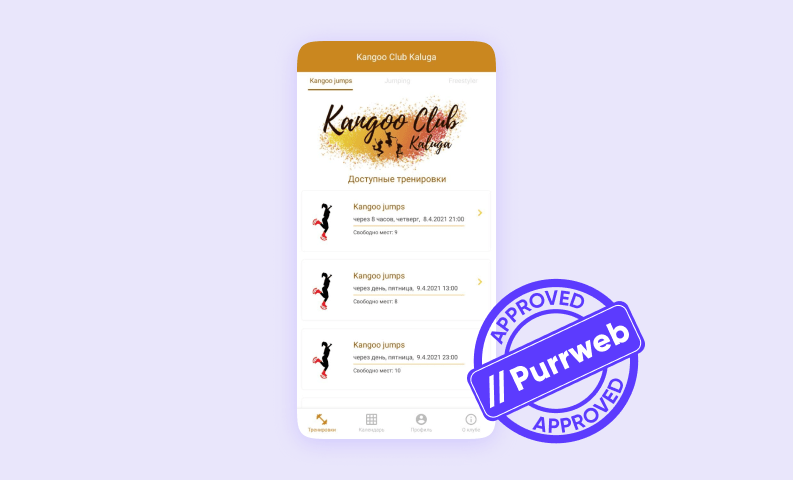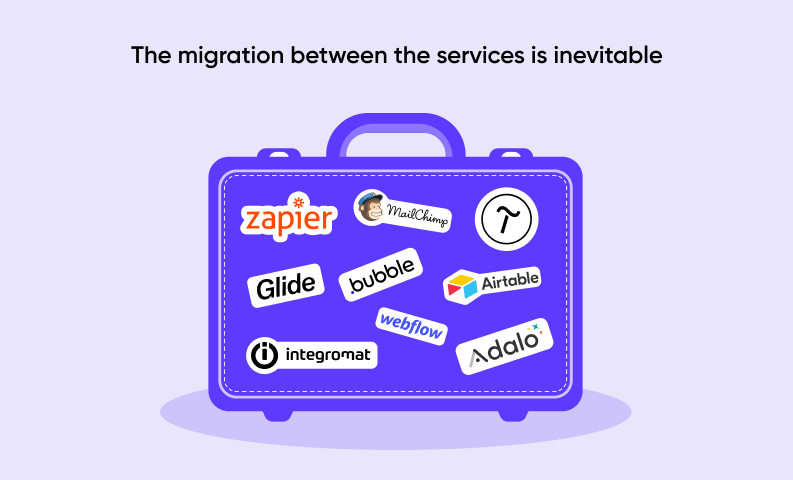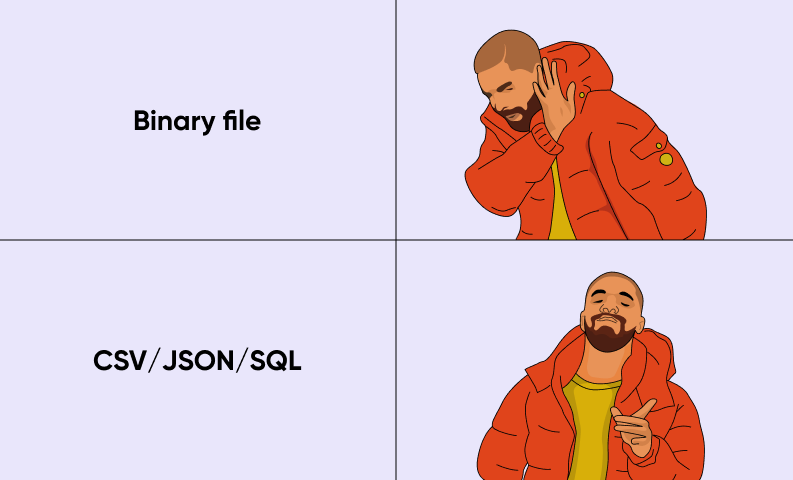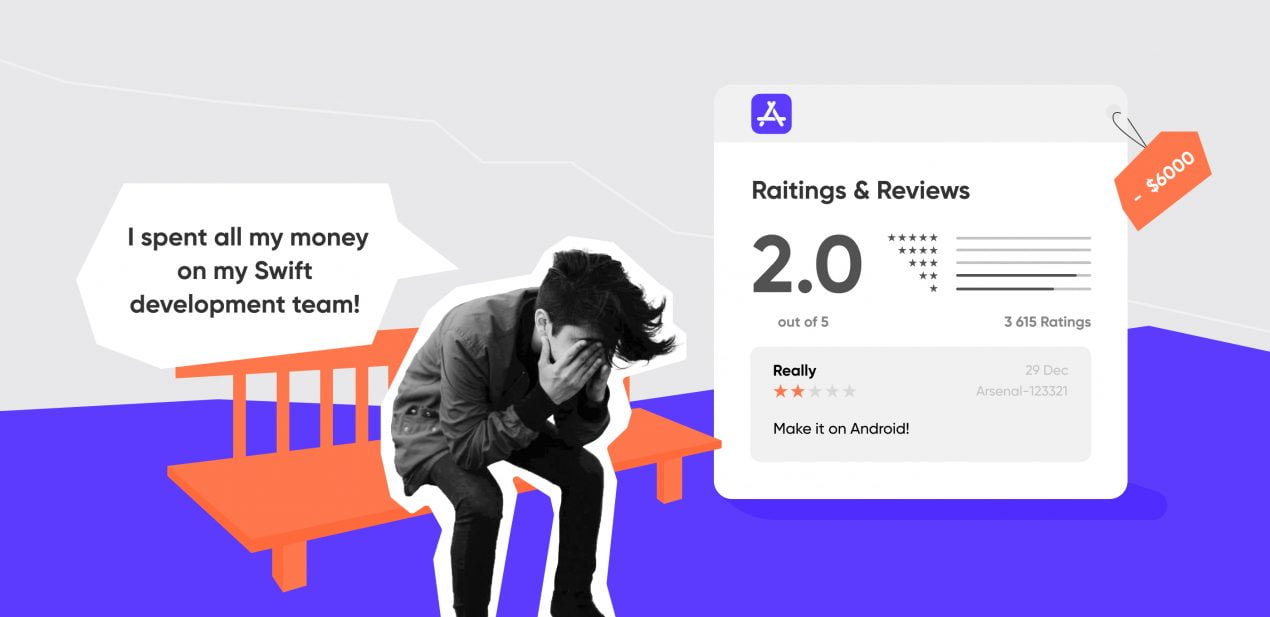No-code: what kind of animal is that?
No-code (or zero-code, as some people say) platform is a tool for creating websites, apps, chatbots and other software without writing a single line of code. It is a direct alternative to traditional development. People usually confuse no-code and low-code. But these are 2 different things. Low-code = no-code + possibility to code up the necessary function.
“Without writing a single line of code” — how is that? To make the software work, you need a code, right?
You’re right. There is a code under the bonnet of any no-code platform indeed. However, the users of such platforms don’t need to know HTML, CSS or JS. Just choose the interface components, fill it in with the content, the no-code platform will take care of the rest: request processing, app compilation and other IT magic.
Let us explain it in the website example.
Imagine that you own a premium tailor shop. You’ve been in the industry for 3 months so far and already acquired the first clients. You couldn’t cultivate the regular ones though as the word of mouth marketing doesn’t work at full capacity yet.
If you want to find new clients fast and at an easy rate, you can create a website and launch SEA on Google. It’s cheaper than an ad campaign with Insta-blogger but the effect is way more long-lasting and controllable.
Simply take the template of a landing page on Tilda, add your style, fill it in with the content. Boom! You have the ready-made site. Then just throw in $50 every month for SEA and handle the client flow.
No-code startup development
Well, a landing page is a piece of cake. What about something harder? Say, a mobile app?
Mobile development is possible with no-code too.
Adalo, Glide, Bubble, and a bunch of other platforms let you create so-called progressive web applications (PWA).
PWA is a website which imitates app functionality. The Service Worker processes the frontend requests while the content is uploaded in the cash. In such a way, the user spares the internet traffic and gets offline access to the app. You don’t need to download the app from the App Store or Play Market, all the functionality is available from the browser of a laptop or a smartphone.
Maybe you didn’t know but the Twitter, Facebook and Forbes sites are PWAs.
Sounds cool but in fact there are some hidden dangers. For instance:
- Browser dependency
PWA strongly depends on the version of a browser you use. You always have to be updated, otherwise some strange errors may pop up. - The access to native functions are limited
If you create a PWA, be ready to have issues with iOS. The camera, motion sensors, phone contacts, SMS, and the history of calls — not available on PWA. - App Store — well, no
Unfortunately, the App Store follows a strict policy in terms of PWA. So, it’s damn hard to upload it there unless you create an app shell.
If it’s crucial for you to upload the app into the App Store and have access to all native functions, it’s better to develop a native app or build a cross-platform app with React Native.
For now, only Adalo supports the native functions and App Store upload. There are also some crutch solutions for Bubble and it’s far from no-coding anyway.
Let’s go over the pros and cons of mobile development with no-code.
What’s so good about no-code
Let’s go through the main reasons why a startuper may bite on no-code.
You don’t need to be an IT pro
Formally, no-code development doesn’t require you to know how to code. Anyone can spend a couple nights watching YouTube tutorials and figure out how to use these platforms. The interface is easy-to-use and is built around 4 terms — screen, component, data, and action.
So, the no-coder adds an empty screen. Heaps up the elements: buttons, images, lists and inputs. Attaches the actions: forwards, backwards, save. Binds the database to the actions. Then creates an ‘x’ number of such screens and aligns the user flows. Sounds kind of easy, huh?
One-click changes
No-code development doesn’t imply managing a dev team and hiring a PM. The no-coder is a PM and a developer rolled into one. So, you won’t have to communicate with the web-studio and approve changes in the design.
Making changes with the dev teams takes at least 12 hours — design the feature, code a page, make front- and backend endpoints, deploy. In no-code it’s just a couple drags and drops. The app is always updated to the latest version meaning that you can ‘roll out’ new features literally every day.
Jackrabbit start
Time from the idea up to a functioning product is minimum. Adalo founders state that you can create a template app in 7 seconds. Well, that’s quite a statement.
It’s clear that ‘7 second’ rhetoric is just the sales pitch. But 2 weeks is enough to create a full-fledged app. If we believe the creator of fitness app Kangoo Club Kaluga, he built it on zero-code exactly in 2 weeks.
We tested Kangoo Club Kaluga. Indeed, you can sign up for training, book the Kangoo wonder-shoes and get push-notifications along the way. An impressive feature set for the amount of time and resources invested in the product.
The design is not our cup of tea but the app works
The minimum budget for starting off
To make the Kangoo Club Kaluga work, it was enough to use Adalo $12/month base rate. Unfortunately, it’s not available anymore. Now, you will pay $50/month for an Adalo dev account and the app release in the stores. But that’s not it. You are to pay $99/year for a dev account on Apple. It’s a bit easier with Google Play though — just pay $25 once.
What’s wrong with no-code
Now, let’s talk seriously. What lies behind all those “pros”.
Actually not that cheap
No-code platforms are low-price only at the very beginning. One step to the side from template solutions and you need plug-ins and customization. To integrate the plug-ins — money. To customize the product — developers.
For example, Bubble works with native Google Maps. If you want to substitute it with Yandex Maps for the Russian market, you need a minimum of 2 days of a professional no-coder. The average rate of such specialist is $25/hour. The math is simple — $25*8*2=$400. In addition, if you want to add routing as in 2GIS, 1 more day or + $200.
$600 — seems to be a reasonable price. But the solutions described above are crutches that can break at any moment and paralyze your business. That’s why you need to employ a developer to be able to fix it quickly.
Don’t forget that the more users you get, the more money you need to pay for storing and processing the data. Which means that you will have to switch over to >$500/month tariffs.
Having removed the developer, you will have to become one
If you follow the ‘do-it-yourself’ framework, in 40-80 hours you need to master:
- UI/UX design — to prevent the user from deleting the app right after getting confused in the interface;
- Backend — to make the app usable and avoid ‘Network error’ popup.
Even if we take the interface off the table (you can start with the template solution), you will hardly manage to quickly launch a product single-handedly. You will have to figure out how to balance between business goals and no-coding.
Don’t forget the hours spent on YouTube tutorials. You can spend time more wisely: promote the product or find investors.
Difficulties with migration
It’s not a problem to change a platform. In our practice, we never met a company which stated that their stack fully fits the needs and they don’t want to change anything. Remember: don’t choose a platform once and for all, think about the export formats they allow in advance to make potential migration easier.
The trick is that most no-code platforms allow to export the app into a binary file. The writing format is unique to every platform, so it will not be that helpful for migration after all. If you stumble upon such a platform, “run, Forest, run”. If it’s possible to export the app into CSV/JSON/SQL — well, it may do.
We will not paint the devil blacker than he is. Not all the no-code platforms let users out only with the binary code. For example, Bubble allows you to export the app into a JSON-file.
Data security issues
If you want to handle European users, you have to meet the GDPR standard — a regulation obligating you to get users’ opt-in every time you transfer the data to another service. The number of such services integrated with the no-code platforms may change literally every day. What if one of these will be hacked? For now, it’s not strongly controlled but we think it’s just a matter of time.
…and yet, no-code or traditional development?
As my grandma says: “every bird thinks his own nest best”. We think our nest — React Native — is the best. At the same time, we don’t imply that all no-code solutions suck. We try to be objective and focus on the business goals and requirements when choosing the stack. Let’s find out when the no-code will do the job and when you can’t go without the development.
No-code will do, if you want to
- Quickly test a simple solution
SaaS service for CV creation, an app for pre-ordering restaurant food or an educational online-platform — all these things can be built with no-code.
- Align internal processes in the company
You don’t need a Bosch kitchen machine, if you want to cook scrambled eggs. The same principle can be applied to internal processes of a small company. You shouldn’t purchase Salesforce to make the sales department generate leads. At start, the following chain would work.
You can’t do without traditional development, if
- You need a custom design
If the niche is already occupied, it means that you need to impress users and give them something they’ve never seen before. Here you can’t get by with the templates. You need complex animations and move beyond the mainstream.
In addition, how could we forget about the user experience? UX designers earn their corn: study the users’ needs, align the logic of interaction with the interface to create a truly godlike user flow.
- Your project is complex
For example, to develop a platform for collective real estate investments, you need to work hard on the backend. ROI, market valuation and rental dividends — the platform is built around this data. You need to find a good backend developer to write complex formulas and align relations to have everything calculated correctly.
The functionality of no-code platforms is limited. To scale up and process the actions of >10.000 users, you need the development.
What we’re getting at
When you go beyond website development or a simple Zapier integration, it turns out that no-code is not as good as people say: it’s hard to deliver technically complex products or scale up solutions. At the same time, in terms of costs it keeps up with traditional development. For the early stage of a product development, it may do well but when you need to rustle — you can’t skip traditional development.
If you don’t want to mess around with crutches, order the app development at Purrweb. Fill in the form below and we will contact you within 24 hours.















